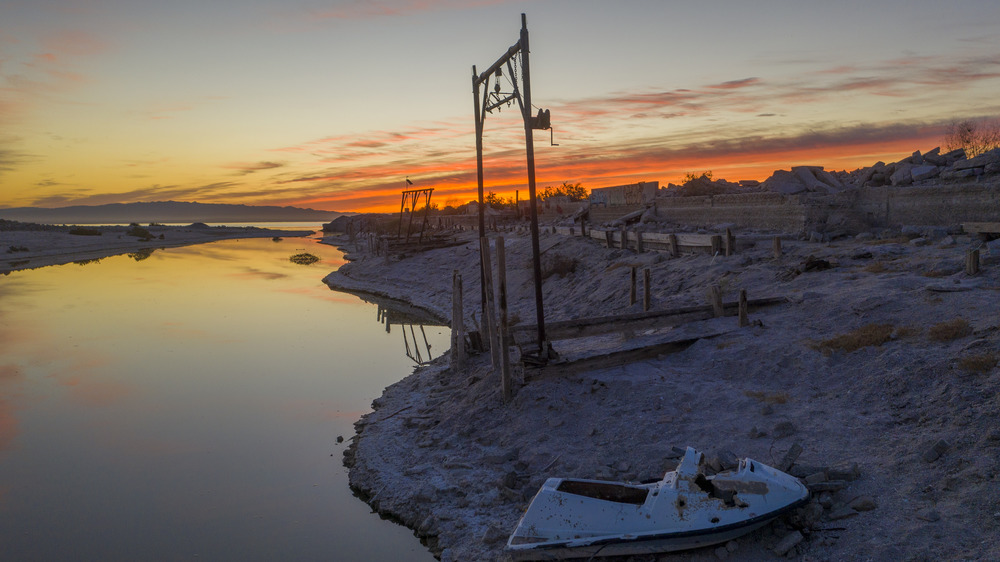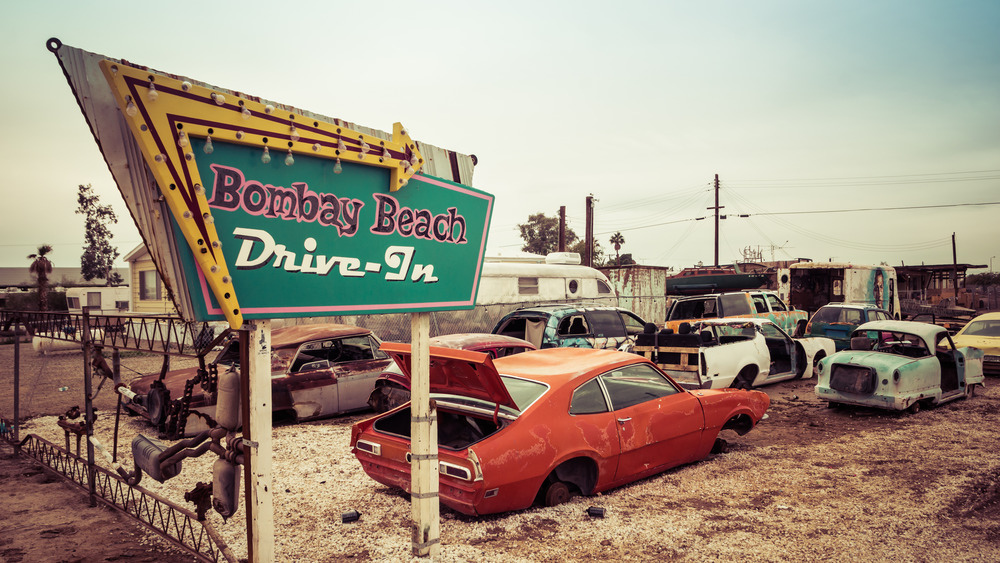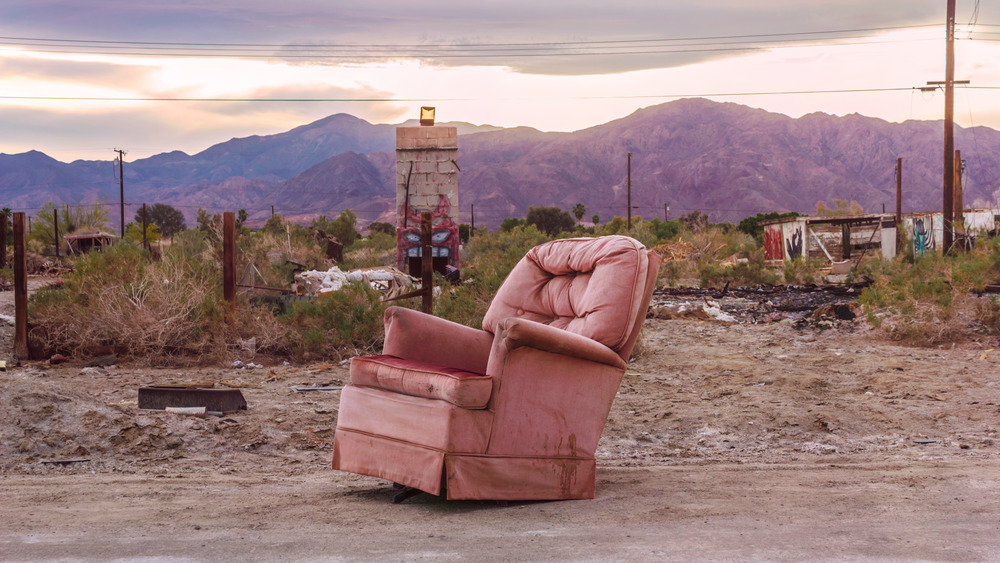How A Mistake Led To The Formation Of The Salton Sea
You ever make a mistake, try to make the best of it, and just hope no one notices? Turns out, that's kind of the story of the Salton Sea, that former vast expanse of man-made lake — the largest in California — that man didn't exactly mean to make.
Our story begins, like so many in California, with water — specifically, the lack of it. The area where the Salton Sea now lies is a fertile agricultural region, partly thanks to the area's rich soil, according to Interesting Engineering. But soil, no matter how optimal, can't do much without water, and so turn-of-the-century engineers built an extensive irrigation system to support farming. The farmers enjoyed a few years of successful irrigation, but the system was no match for 1905's combination of heavy rainfall and snowmelt. If you recall the devastation of Hurricane Katrina, much of the disaster was caused not by the storm but by levees that could not hold. It was very much the same with the irrigation canals in California.
Despite 18 months of effort, the flooding refused to be contained. The entire town of Salton succumbed to the floodwaters and never rose again. The massive basin that stretches from Southern California and down into Mexico suddenly found itself with two new rivers and a huge freshwater lake, explains Interesting Engineering. With big "I meant to do that" energy, California left the lake to its own devices, assuming it would simply dry up on its own.
Making the best of a big mistake
The problem of the Salton Sea may have taken care of itself had the state not decided to begin using it as a dumping site for the Imperial Valley's agricultural runoff. What exactly is agricultural runoff? Sometimes it's benign, like excess water, sediment, or nutrients, explains the sustainability blog Sotoga, but sometimes it's pesticides and herbicides used in farming, or even pathogens. Often, it's simply salt.
The Salton Sea soon became so, well, salty, that all the freshwater fish that had followed those young rivers to a new inland sea died off. Those can-do Californians decided they might as well take the opportunity to stock the lake with fish that liked salty water, managing to once again turn the Salton's Sea's luck around. This created a fortuitous domino effect, says Interesting Engineering, where both migrating birds and fisherman flocked to the lake to take advantage of its new plenty.
Soon, the Salton Sea was the place to be for snowbirds, retirees, inland vacationers, and many more. A whole resort culture sprung up around the lake's shores and even permanent residents moved in. Though they all enjoyed a few good decades, trouble was brewing.
The end of the Salton Sea, and the end of an era
Thanks to the one-two punch of nature and nurture, the Salton Sea is becoming increasingly uninhabitable (for people and wildlife). As United Nations University's Our World explains, "[a]s a closed drainage basin that receives only inflows, the Salton Sea has become saltier and saltier every year."
The Orange County Register explains the disastrous cycle as when "[h]ot weather triggers algae blooms, which die and sink to the shallow lake bottom. Winds then kick up decaying algae and the mix causes a reaction in the water that uses oxygen," causing fish to suffocate.
And it's not just the fish in danger; Desert Sun makes a compelling argument that it's no longer a safe place to live for those with respiratory issues. As the lake recedes due to drought and other factors, it exposes the dusty, polluted lake bed, which might be the reason Imperial County reportedly leads the state in "asthma-related emergency room visits for children."
But all hope is not yet lost. According to KPBS, California is now spending some $200 million to restore habitats and cover approximately 4,000 acres of currently exposed lake bed with water. The Salton Sea may never get back to its former glory, but California, as it's done so many times before, is still trying to make the best of it.


